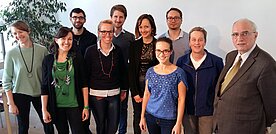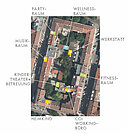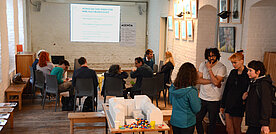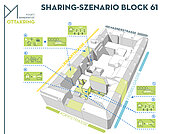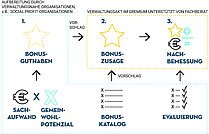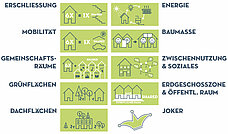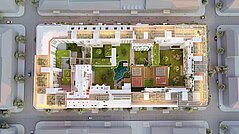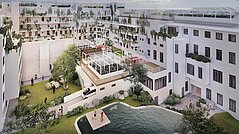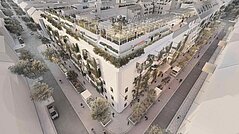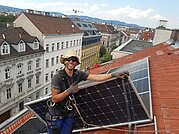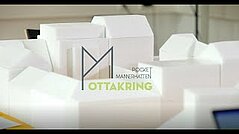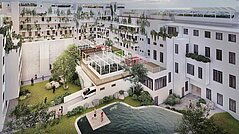Pocket Mannerhatten
1160 Wien
Cooperation Partners
Gußhausstraße 25-29/370-1
1040 Wien
Altenberger Straße 69
4040 Linz
To route

Share and you get more
From 2016 to 2021, the Pocket Mannerhatten Ottakring research project investigated the neighborhood-based use of spaces, areas and infrastructures. Together with neighbors in a block of houses in Vienna-Ottakring, valuable insights were gained.
Spaces and areas in the city are valuable. Sharing and using certain areas with neighbors increases the quality of life: this is one of the most important goals of Pocket Mannerhatten. Pocket Mannerhatten is about sharing - more precisely, about networking and sharing building areas and infrastructures that can otherwise only be used by the people who live or work there. Through spatial connections or the granting of rights of use, different spaces can also be used by neighbors and various offers can be "exchanged" among each other. For example, several courtyards or roof spaces could be combined into one or a larger one. Staircases and elevators could be used by several buildings or renewable energy systems could become more profitable across buildings. This creates benefits for all involved: a higher quality of life, more leisure opportunities, networking in the neighborhood, new development perspectives for buildings and more common good.
read moreMore space for everyone!
The Gründerzeit city with its small plots is particularly suitable for the application of the Pocket Mannerhatten principle. The area is densely cultivated and consists mainly of Gründerzeit block perimeter development with inner courtyards. Compared to other parts of the city, there are relatively few open spaces and green areas. In the Pocket Mannerhatten project, concrete sharing solutions were developed on the basis of a block of houses in Vienna-Ottakring. The block of houses dates back to the Gründerzeit period and has a structure that is typical for this era. There are about 2,500 to 2,800 of these Gründerzeit city blocks in Vienna. Their structures are similar, so that the "model solutions" developed here can also be transferred to other blocks of houses. Pocket Mannerhatten thus generates valuable development opportunities for Vienna's Gründerzeit and offers solutions on how to exploit these opportunities.
Support processes – framework creation.
Pocket Mannerhatten provides a framework that clearly regulates the exchange and sharing of uses. There are already elaborated possibilities for sharing and room for further ideas on how trade and sharing can take place. Depending on the space available and the wishes of the people involved, each neighborhood can organize itself in different ways. Owners of neighboring properties can enter into legally binding agreements based on the preliminary work of Pocket Mannerhatten, in which the use and maintenance of the areas as well as liability issues are clearly regulated. The participation of residents and owners is a central component of the strategy. All local actors are intensively involved in the development of ideas, planning and implementation, use and administration. In the process, agreements are developed for a fair and common-good-oriented joint use of areas or resources.
More is created together.
Sharing is worthwhile - not only because sharing already brings many benefits, but also because one of Pocket Mannerhatten's goals is a common-good-oriented "incentive system." The idea behind it: those who share contribute to the common good, and this should be rewarded. A possible incentive system was explored and concretized together with various experts and representatives of the City of Vienna within the framework of the research project, which was completed in spring 2021.
Energy sharing takes place in the city.
A new photovoltaic system was installed on the roof of a multi-story residential building in Liebhartsgasse in July 2020. The special feature: it supplies the residents in their own house but also neighbors from the block with locally produced energy. The system is installed on both sides of the building and has dimensions of 40m² on the street side, facing west, and approx. 56m² on the east side of the courtyard. Thus the plant is optimally aligned. It should provide a planned output of 17.5 kWp - 19,200 kWh per year. This can cover the balance of energy needs of about 11 households.
More mobile together.
Other implementations include a private car-sharing scheme for a group of neighbors, which was established in spring 2020. One car owner was interested in sharing his own vehicle - a "stationary vehicle" - with other neighbors. At the same time, there were some neighbors who did not own a car themselves, who used paid car-sharing services for special activities at the time (transport, excursions) and preferred a lower-threshold, less expensive car use. The fair and low-threshold car sharing by more than five different families is entirely self-organized. In perspective, the implementation plans to purchase a sharing electric vehicle and use the electricity from the PV system for its energy needs. The block also houses a cargo bike from the cargo bike collective. A basement that could be used as a common room is currently being converted.
Knowledge Sharing.
A great deal of research and development was carried out as part of the project. The media, studies and reports that resulted are available for download on the Pocket Mannerhatten project homepage (Downloads and Media) or in the download area on the IBA_Vienna website (Contributions to IBA_Vienna)!
Project completion
2021
The primary funding for Pocket Mannerhatten came from the Climate and Energy Fund and was carried out as part of the Smart Cities Demo program.
Videos
Related Events
Pocket Mannerhatten – "Mobilitäts-Sharing: Konzepte für die Nachbarschaft": Online-Diskussion
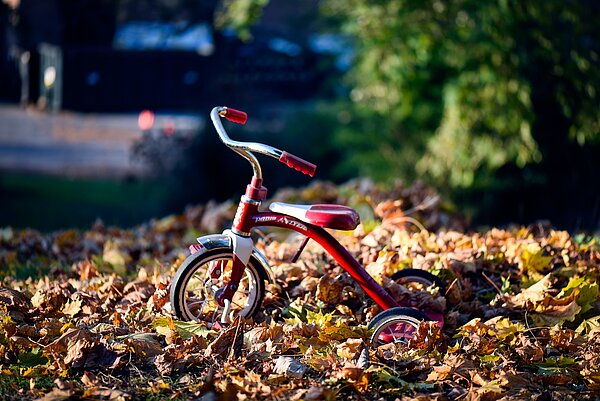
Mobilität ist ein Grundbedürfnis – das sich durch gemeinsam genutzte Fortbewegungsmittel umweltschonend und bedürfnisgerecht erfüllen lässt. Wie kann Mobilitäts- Sharing fair und alltagstauglich organisiert werden und welche Rolle spielt der öffentliche Raum dabei?
Pocket Mannerhatten – "Wie Wohnen: Zuhause in der Nachbarschaft": Online-Diskussion
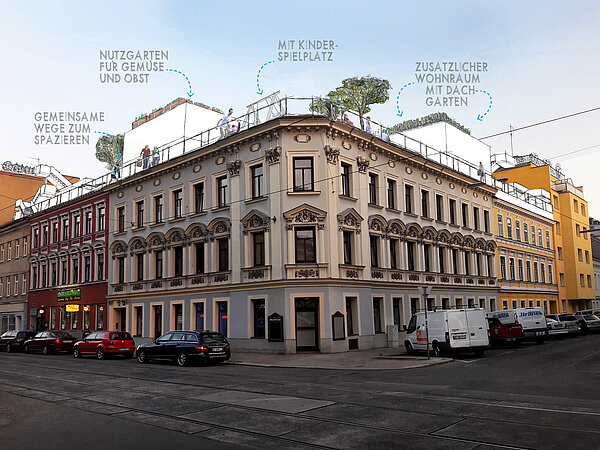
Zum Wohnen gehört mehr, als die eigenen vier Wände bieten können. Durch Sharing von Räumen, Flächen und Infrastrukturen entstehen Nachbarschaften mit neuen Qualitäten. Kann so ein ganzer Häuserblock zum Zuhause werden?
Pocket Mannerhatten – "Klimaneutrale Energieversorgung als Gemeinschaftsprojekt?!": Online Diskussion

Um Klimaziele zu erreichen, muss Energieversorgung neu organisiert werden – gerade in der Bestandsstadt! In „Energy Communities” werden Wärme und Strom lokal erzeugt UND verbraucht. Wo liegen soziale, technische und rechtliche Möglichkeiten?
Pocket Mannerhatten – „Stadterneuerung: hausgemacht!”: Online-Diskussion
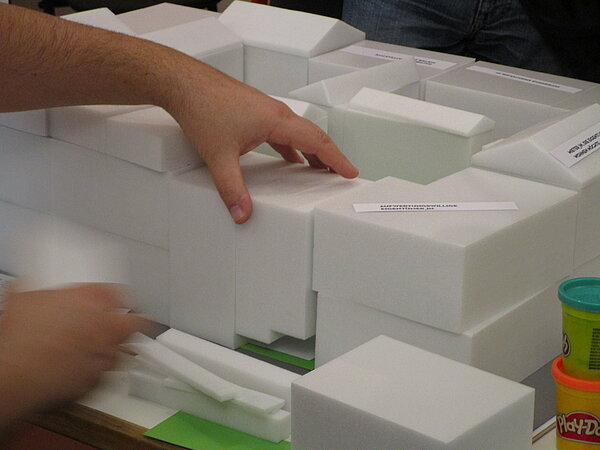
Wie können Bürger*innen eigene Impulse in die Stadterneuerung einbringen? Anhand des Sharing-Projekts Pocket Mannerhatten und anderer Beispiele wird diskutiert, wie neue Ideen und Konzepte zur Umsetzung kommen.
Pocket Mannerhatten – "Mehr Grün: Stadtklima, Ökologie und Nachbarschaft": Online-Diskussion

Gemeinsam genützte Innenhöfe und begrünte Straßenzüge als Stadt-Oasen gegen sommerliche Hitzeinseln! Wie können Bürger*innen diese Vision verwirklichen und was können wir uns vom Grün in der Stadt erwarten?
Pocket Mannerhatten – "Galerie der Möglichkeiten"
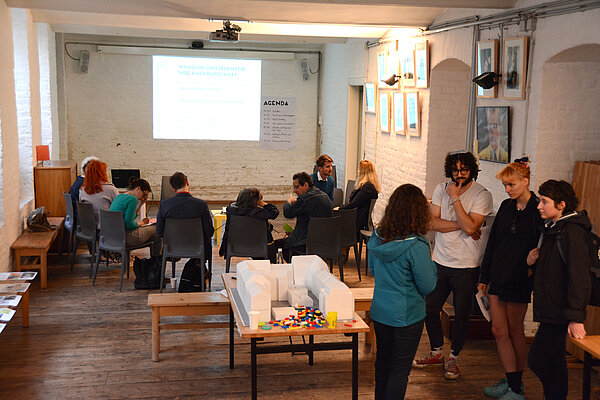
Wie kann räumliches Sharing eine Nachbarschaft verändern? Um diese Frage dreht sich das Projekt Pocket Mannerhatten. Bei der temporären Ausstellung „Galerie der Möglichkeiten“ und durch eine Reihe von Online-Events wird das Thema erlebbar gemacht.
"Wie wohnen wir morgen?": Ausstellung zum Zwischenstand der IBA_Wien
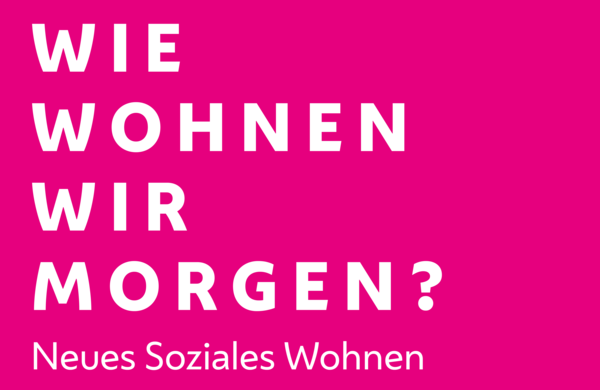
Die Ausstellung „Wie wohnen wir morgen?“ ist Teil der Zwischen- präsentation der IBA_Wien 2022. Sie bietet einen Überblick über die laufenden Projekte und Prozesse zur Umsetzung innovativer Neuentwicklungen rund ums Thema soziales Wohnen.
IBA-Talk: Bestandsentwicklung und Stadterneuerung
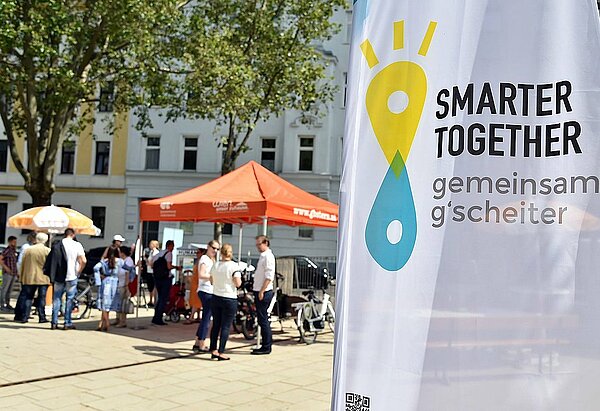
Bestandsentwicklung und Stadterneuerung - Vision, Technologie, Beteiligung
Cooperation Partners
Gußhausstraße 25-29/370-1
1040 Wien
Altenberger Straße 69
4040 Linz
